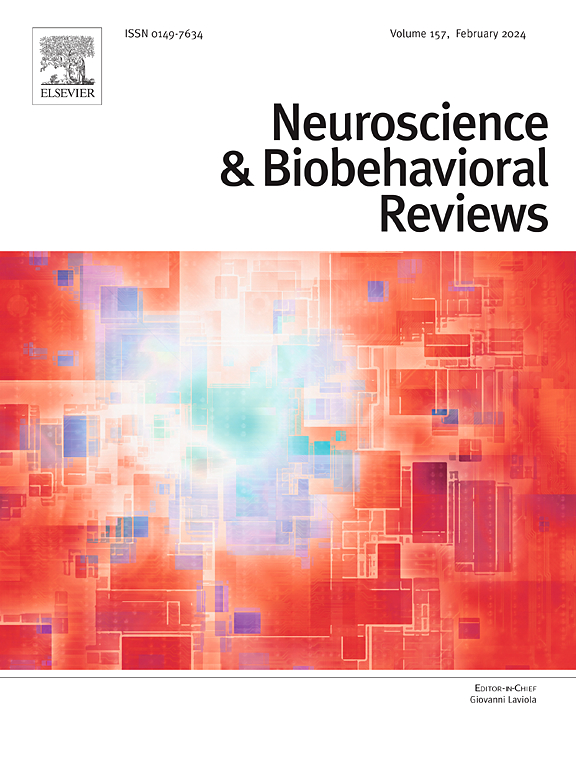Interneurons, GABAA signaling and their presumptive role in catamenial epilepsy
IF 7.9
1区 医学
Q1 BEHAVIORAL SCIENCES
引用次数: 0
Abstract
Catamenial epilepsy is characterized by increased seizure frequency or severity during specific phases of the menstrual cycle, presumably driven by changes in the balance between excitation and inhibition. GABAA receptor-mediated inhibition, which is involved in focal epileptic disorders rests on the presynaptic release of GABA by interneurons. Work performed in the 1980s identified loss of interneuron function in seizure onset zones and the ability of GABAA receptor antagonists to induce epileptiform synchronization thus indicating that decreased inhibition leads to seizures. However, in vitro and in vivo findings obtained during the last four decades from animal models and epileptic patients have challenged this view. Here, we will first review such active, though unexpected, contribution of interneurons (and thus of inhibition) in seizure initiation and maintenance. We will then address the blood level changes in the sex hormones progesterone and estrogen occurring in humans and rodents during the ovarian cycles, and their potential involvement in specific types of catamenial epilepsy. Finally, we will discuss the active contribution of parvalbumin (PV)-positive GABAergic interneurons to seizure activity. Due to high estrogen blood levels, these cells become hyperexcitable during periovulation and when ovariectomized females are treated with 17β-estradiol; this estrogen β receptor-mediated mechanism makes seizures last longer during periovulation. Such novel role of PV-positive interneurons in increasing focal seizures during proestrus/estrus may lead to formulate new therapeutic interventions in controlling seizure exacerbation during periovulation.
中间神经元,gabaa信号及其在枕骨癫痫中的推测作用。
羊膜癫痫的特点是在月经周期的特定阶段发作频率或严重程度增加,可能是由兴奋和抑制之间的平衡变化引起的。GABAA受体介导的抑制作用与局灶性癫痫疾病有关,它依赖于中间神经元突触前释放GABA。在20世纪80年代进行的研究发现了癫痫发作区中间神经元功能的丧失以及GABAA受体拮抗剂诱导癫痫样同步的能力,从而表明抑制作用的降低导致癫痫发作。然而,在过去的四十年中,从动物模型和癫痫患者中获得的体外和体内研究结果对这一观点提出了挑战。在这里,我们将首先回顾这种活跃的,虽然意想不到的,中间神经元(因此抑制)在癫痫发作的开始和维持的贡献。然后,我们将讨论人类和啮齿动物在卵巢周期中发生的性激素黄体酮和雌激素的血液水平变化,以及它们与特定类型的先天性癫痫的潜在关系。最后,我们将讨论小白蛋白(PV)阳性gaba能中间神经元对癫痫发作活动的积极贡献。由于血液中雌激素水平高,这些细胞在排卵期和卵巢切除的女性接受17β-雌二醇治疗时变得过度兴奋;这种雌激素β受体介导的机制使癫痫发作在排卵期持续时间更长。pv阳性中间神经元在增加发情前期/发情期局灶性癫痫发作中的新作用,可能会为控制周期发作加剧制定新的治疗干预措施。
本文章由计算机程序翻译,如有差异,请以英文原文为准。
求助全文
约1分钟内获得全文
求助全文
来源期刊
CiteScore
14.20
自引率
3.70%
发文量
466
审稿时长
6 months
期刊介绍:
The official journal of the International Behavioral Neuroscience Society publishes original and significant review articles that explore the intersection between neuroscience and the study of psychological processes and behavior. The journal also welcomes articles that primarily focus on psychological processes and behavior, as long as they have relevance to one or more areas of neuroscience.

 求助内容:
求助内容: 应助结果提醒方式:
应助结果提醒方式:


